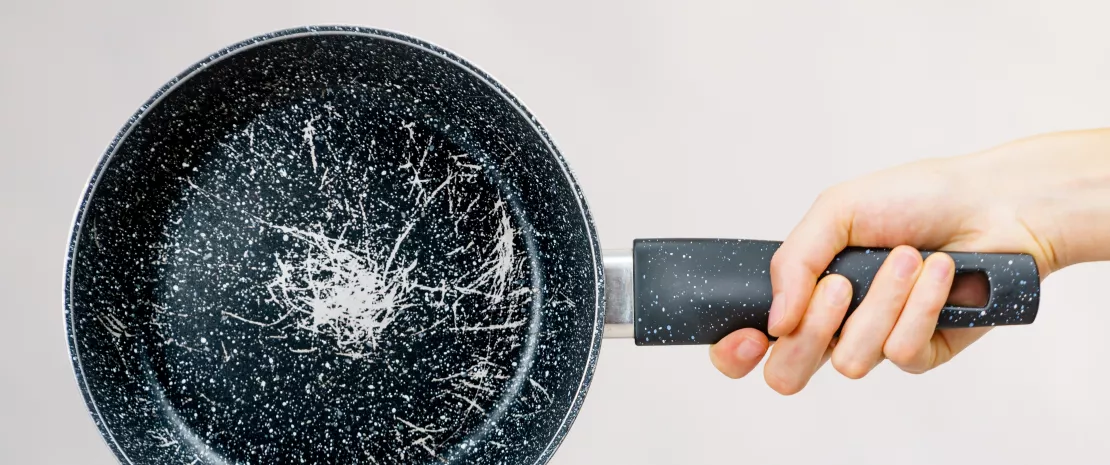Gut microbiota: PFAS purifier?
PFAS, better known as “forever chemicals,” have contaminated our environment and our food. Our gut bacteria may help limit the absorption of these substances by our bodies: they sequester them before escorting them out with our stool and into the toilet. Good riddance!
- Learn all about microbiota
- Microbiota and related conditions
- Act on your microbiota
- Publications
- About the Institute
Healthcare professionals section
Find here your dedicated section
Sources
This article is based on scientific information

About this article
(sidenote:
PFAS (per- and polyfluoroalkyl substances)
Large group of chemicals, also referred to as ‘forever chemicals’, consisting of a more or less long or branched carbon chain and containing at least one fluorinated group. Their extreme persistence in the environment has been understood for a long time. However, other properties of these compounds that are displayed by certain subgroups of PFAS, are concerning:
- potential for bioaccumulation in living organisms;
- high mobility in water, soil and air;
- long-range transport potential; and
- (eco)toxicological effects that impact humans and the environment.
Sources:
European Environment Agency: PFAS Pollution in European Waters
Gaillard L, Bernal K, Coumoul X et al. Forever pollutants and human contamination: State of art and challenges around per- and polyfluoroalkyl substances (PFASs).Cah Nut & Diet. 2024. Dec (59);6:349-361.
)
, or “forever chemicals,” are widely found in everyday objects (fire-resistant materials in our furniture, non-stick pans, etc.), and today they’re turning up in the environment, in our food... and apparently in the bacteria of our gut microbiota. At least, that’s what a study 1 has demonstrated for the first time in mice that were fed 42 PFAS commonly found in our diet.
4,700 Per- and polyfluoroalkyl substances (PFAS) include over 4,700 compounds. ¹
€50–80 billion The annual health-related cost of PFAS exposure is estimated to be 50–80 billion Euros across Europe. ¹
More or less bioaccumulating bacteria
Result: several of their gut bacteria massively bioaccumulate certain PFAS. Their surprising favorites: large-sized PFAS.
Among the 89 bacterial strains studied, 38 turned out to be formidable PFAS “vacuum cleaners,” particularly those belonging to the Bacteroidota family. Even at very low doses, PFAS are absorbed in just 3 minutes and accumulate within the bacteria at concentrations up to 50 times higher than in the bacteria’s surrounding environment.
100
The half-life of very long-chain PFAS — the time it takes for half of a substance to degrade or be eliminated — could range from 10 to 100 years, highlighting their extreme persistence in the environment. In a living organism, the half-life varies from a few hours to several years depending on the molecule. 2
No harm done!
As surprising as it may seem, despite their toxicity and their “soapy” effect (PFAS are known and used for their surfactant properties), PFAS appear to have little impact on the functioning of gut bacteria.
They accumulate inside these microorganisms in the form of compact clusters, which, according to the authors, may limit their toxicity.
Even better, the bacteria seem to adapt: after about a hundred generations, the descendants of Bacteroides uniformis or E. coli grow faster than their predecessors, despite the continued presence of PFAS which they continue to trap efficiently.
Even though the bacteria survive well, some changes are nevertheless observed in their functioning in response to this stress, although, at this stage, it is not yet possible to assess the consequences for the microbiota or the host.
Microbiota and exposome: a dialog at the core of our health
PFAS eliminated through stool
But above all – and this is the study’s major discovery – the bacteria that trap PFAS facilitate their natural elimination. In mice transplanted with human gut microbiota, PFAS were found in greater amounts in their droppings than in mice without microbiota. And the greater the bioaccumulation potential of the bacteria in the digestive system, the more significant this elimination becomes.
Therefore, gut microbiota, especially when rich in bioaccumulating bacteria, may act as a kind of natural extractor of PFAS, trapping these pollutants inside their cytoplasm before carrying them out with the stool. Destination: the sewers!
These results provide new insight into the impact of PFAS on the microbiota, although further studies are needed to better understand the role of these bioaccumulating bacteria in our health.












